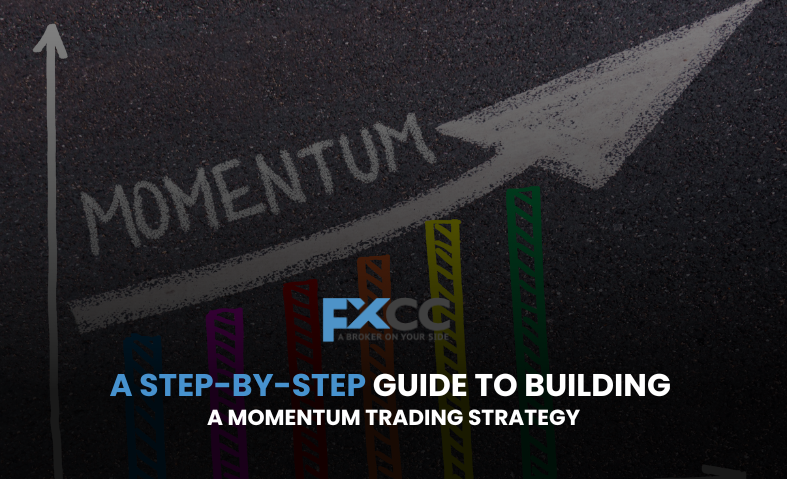Have you ever seen the price of a stock go up quickly and wished you could have been there? That’s the main notion behind trading on momentum. It’s a strong approach that involves buying assets that are currently going up quickly, with the hope that the trend will continue. You’re not looking for a hidden gem; you’re just attempting to ride the wave of a stock that’s already moving.
It’s not about guessing when you make a strong momentum trading plan. It is a methodical procedure with specific rules and steps. This book will show you how to make your own strategy from scratch using easy-to-understand and useful tactics.

Step 1: Get to know the main idea
The main idea behind momentum trading is simple: things that are moving tend to remain moving. In the world of trading, this suggests that a stock that is going up or down sharply is likely to keep going in that way for a while. As a momentum trader, your job is to find these big moves early, get in on the trade, and then get out when the momentum starts to slow down. This technique is based on technical analysis, which means using charts and indicators to make decisions instead of looking at a company’s underlying value.
Step 2: Picking a Time Frame
You need to set a time frame before you do anything else. This will be the most important part of your plan. Do you want to make rapid deals that last a few minutes or hours (intraday trading)? Or do you like trades that linger for days or weeks (swing trading)?
Day traders utilize charts with very short timeframes, like 1 minute or 5 minutes, to catch fast moves.
Swing traders usually look at daily or even weekly charts to see a bigger change over a longer period of time.
The time frame you choose will affect how often you trade, how much time you spend on it, and what tools you utilize. Being constant is the most crucial thing. Don’t use different timeframes in the same approach.
Step 3: Looking for Momentum Candidates
This is what you do when you trade on momentum. You need a means to locate stocks that are already going up quickly. Using a stock screener is the easiest way to do this. You can use a screener to find stocks that have shown:
A big price jump, like a stock that has gone up more than 5% or 10% in the recent week or month.
High volume: A big rise in trading volume means that other traders are very interested, which frequently leads to more momentum.
You can use simple technical indicators to confirm how strong the trend is once you have a list of possibilities. The Relative Strength Index (RSI) is a wonderful indicator for telling you if a stock is too expensive (and may need to pull back) or too cheap. The Moving Average Convergence Divergence (MACD) is another well-known indicator that can help you see changes in the intensity and direction of a trend.
Step 4: Setting the rules for when to enter and leave
This is the most important thing you can do to protect your money and manage risk. A solid plan tells you exactly when to get in and when to get out.
It’s not enough to buy a stock because it’s going up. Wait for a clear sign. You may say that you will only trade when the stock price breaks through a critical resistance level or when a fast-moving average crosses over a slower-moving average.
Every trade needs a defined exit plan, which includes rules for when to take profits and losses. You should set a price goal for when you want to take profits, like when the stock hits a new resistance level or a certain percentage gain. You need a stop-loss order, though, which is more critical. This is an automatic order to sell your position if the stock price decreases to a specified level, which will protect you from a big loss. Don’t move your stop-loss further away in the belief that the market will bounce back.
Step 5: Learn, practice, and improve
You need to test your plan before you put your hard-earned money at jeopardy. The best method to achieve this is to trade on paper, which is also called simulated trading. A lot of online brokerage platforms offer this option, which lets you experiment with fake money in a real market setting. This enables you to test your rules without putting any money at risk.

It’s important to look over your trades (actual or simulated) after you’ve done a couple. To keep track of what you bought, why you bought it, and how the deal went, write it down in a trading notebook. This practice enables you to derive insights from both your achievements and setbacks, facilitating continuous enhancement and refinement of your strategy. To build a good momentum trading strategy, you have to keep learning and stick to your plan.


